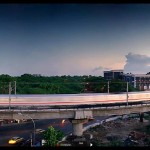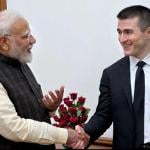This is an interesting interview by Claude Arpi, with the Jammu and Kashmir Governor Lieutenant General S K Sinha (retd). Lt General Sinha discusses the Kashmir and Siachen issues from Indian standpoint in clear military and legal terms. It is important in today’s age where this issue has been obfuscated by the Pakistanis, Islamists, and the overzealous Indian pacificists to understand the backdrop of the differences between India and Pakistan on Kashmir.
…Under 1948 Resolution Pak forces had to withdraw from Kashmir and not the Indian forces.
A must read and one post I wanted to save for the future of my generations.
In your book, you mention the briefing you received before leaving Delhi from Sir G S Bajpai, secretary general, Ministry of External Affairs. It seems to me that it brings some clarity to the Siachen issue.
There is a background to it. Let me explain in detail. Our contention has been that Kashmir’s accession to India was legal and in accordance with the Independence Act passed by the British parliament.
This Act makes a distinction between the provinces directly ruled by the British called British India and the princely states which were under maharajas or nawabs which had entered into an agreement with the British recognising their paramountcy. Ceding defence and foreign affairs to the British, they retained autonomy on all other subjects.
That was the legal position and the British knew that once paramount power left the subcontinent, the paramountcy was gone. It was left to the princely rulers to decide the future of their state.
Interestingly enough Jinnah supported this while the Congress wanted the people of the states to decide their future, because it was more democratic.
Jinnah had a special reason for supporting (the British scheme). He wanted Hyderabad to accede to Pakistan. It was the largest state in India, the size of France, with its own resources; its population was 10 per cent Muslim or even less, maybe 92 or 93 per cent were Hindus.
Jinnah thought that by applying this rule (the princes decide), the Nizam would opt for Pakistan and Hyderabad would become Pakistan territory.
As far as Kashmir is concerned, Jinnah was also sure that it would fall like a ripe plum in his hands, because geography was in his favour. It is a different story that he got neither.
At the time of Partition, he went to the extent to ask the maharajas of Jodhpur and Jaisalmer to accede to Pakistan. He offered them anything that they wanted, but these ‘chaps’ did not take the bait and did not sign. That was the (legal) situation.
Given these conditions, when Maharaja Hari Singh acceded to India in October 26 1947, the legality of the Accession could not be questioned. To get around it, Pakistan started the propaganda that Hari Singh had not acceded and that it was only after the army went there on October 27 that he was forced to accede.
During our briefing in 1949 Sir G S Bajpai said the cease-fire Line is being drawn on the basis of ‘as is, where is’. The position of the opposing armies on the day of the cease-fire (January 1, 1949) should be allowed to remain undisturbed and the Cease-Fire Line, CFL, be drawn in between the two armies at that basis. Of course, in Karachi during the negotiations, there was a lot of controversy and it took us 7 days to sort them out.
Bajpai gave us an interesting argument. In areas of no man’s land, where neither side has been in occupation, we should say that these no man’s lands should be inclusive of India because legally Kashmir is India territory. This was accepted by the UN Commission for India and Pakistan after we presented our arguments.
Now in the case of the Tillai Valley (200 sq miles, east of Guraiz), it was a complete no man’s land, no Indian Army, no Pakistan army. As the result of the cease-fire agreement and on the basis of this principle, Tillai was given to us. Today, it is part of Indian territory.
We delineated the CFL on 700 km till Point 9842. Neither side visualised at that time that there could be some operations at those heights. In any case, the CFL was visualised as a temporary arrangement till the case is decided.
From Point 9842, we just wrote ‘and thence north to the glaciers’ without defining the line.
The Pakistan contention today is that they want a straight line from Point 9842 to the Karakoram Pass.
But a line from Point 9842 to the Karakoram is not straight, it goes eastwards.I mean a direct line to the Karakoram Pass. Our view is that it has to follow the contour of the mountains, and if one follows this concept then Siachen is with us.
What about Bajpai’s principle?
Yes, you can extend this principle (to the Siachen).
The West likes to say that Kashmir is disputed, that the matter is under dispute between India and Pakistan, but if you read the August 13th 1948 Resolution on which the cease-fire is based, there is a recognition of the fact that Kashmir has legally acceded to India.
Otherwise, why would Part II (about the truce) of the 1948 Resolution have said that during the period of truce all Pakistani forces should withdraw from Kashmir, while the Indian forces could remain in Kashmir. The Resolution did say that and Pakistan accepted it only because of the legal consideration (that Kashmir has legally acceded to India).
















